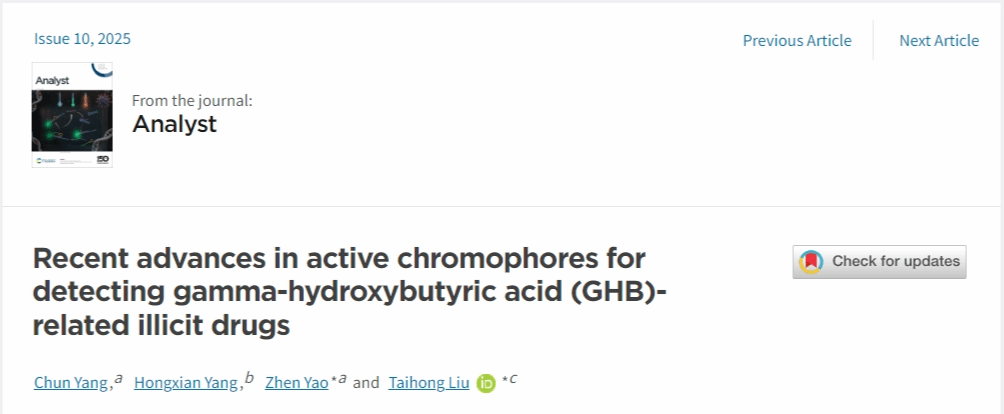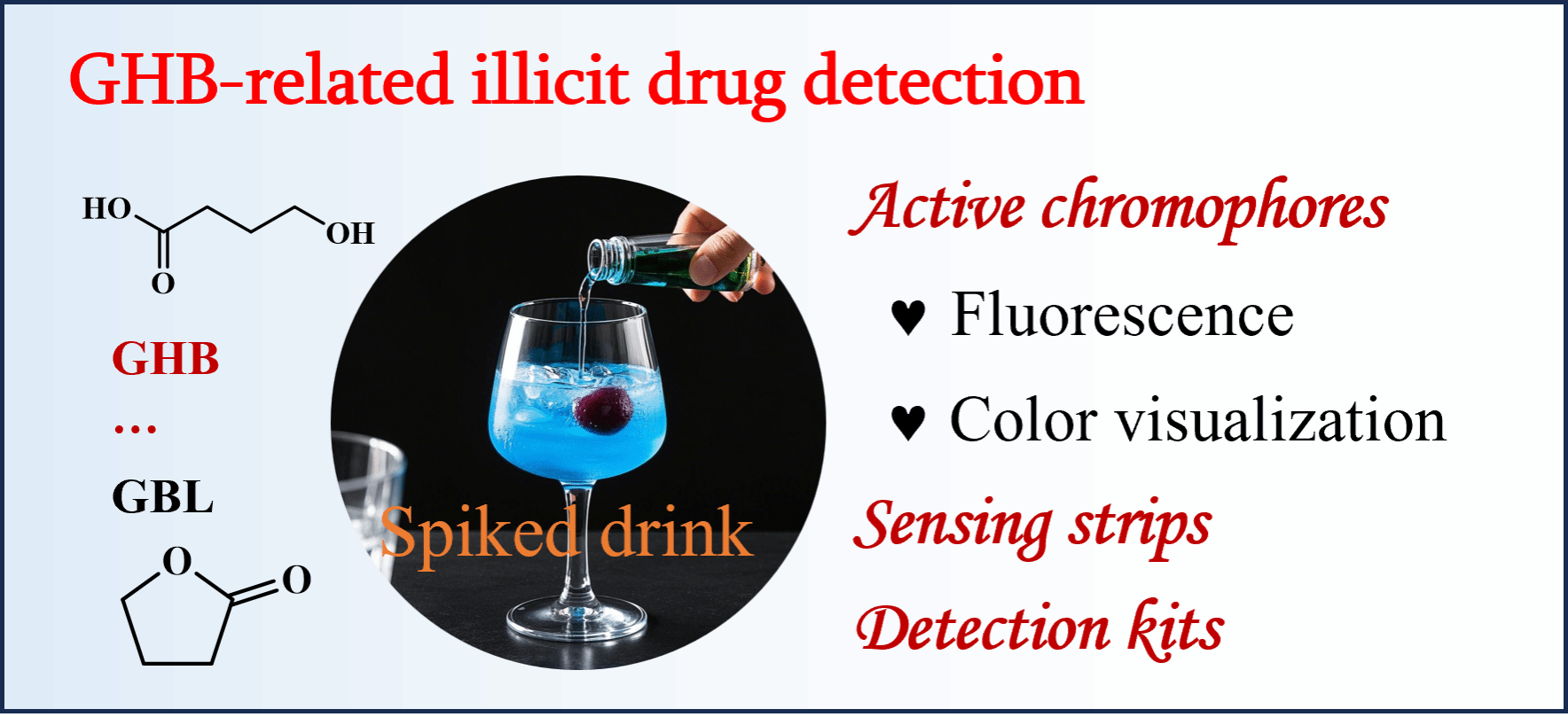
Chun Yang, Hongxian Yang, Zhen Yao,* and Taihong Liu*. Analyst, 2025, 150, 1972-1985. DOI: 10.1039/D5AN00167F

Gamma-hydroxybutyric acid (GHB) and its related illicit drugs are of particular forensic interest owing to their abuse as recreational drugs and implications in drug-facilitated sexual assault. The rapid and complete metabolism of GHB in the body results in a short evidence collection window for forensic experts, and challenges exist in simultaneously differentiating between exogenous addition in spiked drinking and low endogenous levels of GHB. Consequently, the development of real-time and on-site detection strategies for GHB plays vital roles in tackling drug-facilitated crimes. Recently, fluorescent and colorimetric strategies have emerged as promising approaches in this field, offering multiple merits of high sensitivity and specificity, ease of handling, and cumulative signaling effects. This minireview outlines the endogenous levels of GHB in the body and possible metabolism pathways, summarizes the recent advances in active chromophores, elucidates the corresponding sensing characteristics, and then exemplifies the developed sensing strips and detection kits based on the optimized chromophores mostly in the past five years. Additionally, the perspectives of the relevant studies are discussed in detail.
First Author: Yang Chun, National Anti-Drug Laboratory Shaanxi Regional Center
Correspondence Authors: A/Prof. Liu Taihong, Shaanxi Normal University; Yao Zhen, National Anti-Drug Laboratory Shaanxi Regional Center
Full Text Link: https://doi.org/10.1039/D5AN00167F
 Latest Updates
Latest Updates






